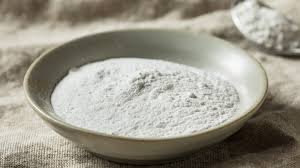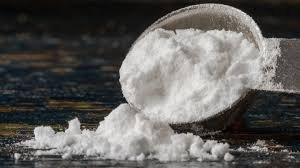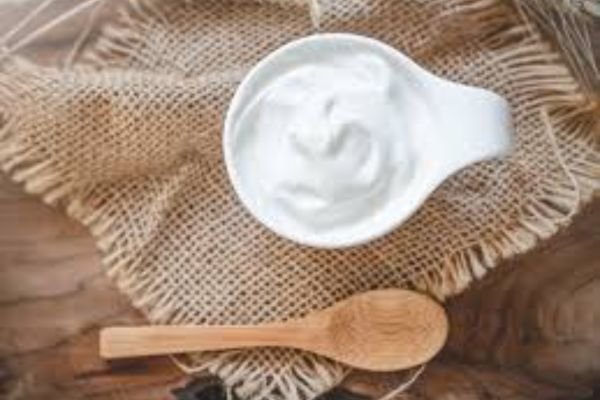Can I add cream of tartar to any cookie recipe? This seemingly simple question has stirred both curiosity and experimentation among home bakers and culinary professionals alike. It frequently surfaces in baking forums, recipe comment sections, and conversations among kitchen enthusiasts. The world of cookie-making, while outwardly straightforward, is governed by a delicate and intricate chemistry. The interplay of ingredients—sugars, fats, leaveners, and flour—can yield vastly different textures and flavors with even minor adjustments. One such adjustment is the inclusion of cream of tartar, a crystalline acidic compound derived as a byproduct of wine production.
In the realm of baking science, cream of tartar holds several valuable functions. It is most notably recognized for its ability to stabilize egg whites, assist in achieving the perfect meringue, prevent sugar from crystallizing, and activate baking soda when used in tandem. These qualities make it an essential tool in the creation of certain iconic cookies, such as snickerdoodles and meringue-based confections.
Yet, the question persists—can I add cream of tartar to any cookie recipe? The answer is not simply a matter of yes or no, but rather one that invites a more sophisticated analysis of how this ingredient interacts with the specific structural and flavor components of various cookie styles.

Understanding Cream of Tartar in Baking Science
Before looking into the question, can I add cream of tartar to any cookie recipe? It is essential to grasp the fundamental role this ingredient plays in the science of baking. Cream of tartar, chemically known as potassium bitartrate, is an acidic byproduct of the winemaking process and serves multiple functional purposes in baked goods. It acts primarily as a stabilizing agent—especially for egg whites—and as a leavening component when combined with baking soda.
Beyond these technical uses, cream of tartar also lowers the dough’s pH, promoting a tender texture while simultaneously preventing sugar crystallization. This quality is especially beneficial in delicate cookies like snickerdoodles and sugar cookies, where both softness and smoothness are desirable. Thus, asking, can I add cream of tartar to any cookie recipe? necessitates an understanding of its chemical influence on texture and flavor.
Historical Use in Cookies
Historically, the enduring question, can I add cream of tartar to any cookie recipe, finds its roots in early American baking traditions. During the 18th and 19th centuries, cream of tartar was a common household staple, prized for both its accessibility and multifunctional properties. It served not only as a leavening agent but also as a flavor enhancer and textural aid, especially in recipes where commercial baking powders were not yet prevalent.
When pioneering bakers of the past posed the same question—can I add cream of tartar to any cookie recipe—they often embraced culinary experimentation, giving rise to enduring classics such as the beloved snickerdoodle. Their fearless use of this ingredient laid the foundation for its place in modern cookie craftsmanship, where its legacy continues to influence baking choices today.
Why Would I Want to Add Cream of Tartar?
As a dedicated baker, posing the question, Can I add cream of tartar to any cookie recipe?” compels a deeper exploration into the distinctive benefits this ingredient imparts. Cream of tartar is highly esteemed for its ability to lend cookies a delightfully chewy and soft texture, contributing both to structure and mouthfeel.
It is the key component responsible for the characteristic tang in snickerdoodles and plays a vital role in inhibiting sugar crystallization, ensuring a smoother, more refined texture. Therefore, when I thoughtfully consider, can I add cream of tartar to any cookie recipe? I must carefully assess whether the particular cookie in question would truly benefit from the added acidity and its consequential influence on flavor, consistency, and overall outcome.
Cookies That Benefit from Cream of Tartar
Let us now address the heart of the matter: can I add cream of tartar to any cookie recipe? From a purely technical standpoint, the answer is yes—it can be added. However, from a practical and culinary perspective, not all cookies require or benefit from its inclusion. Cream of tartar is most effective in recipes that prioritize softness, chewiness, and sugar stability.
In cookies such as snickerdoodles, classic sugar cookies, and meringue-based varieties, the answer to can I add cream of tartar to any cookie recipe becomes an emphatic and informed yes. These recipes utilize cream of tartar to stabilize whipped egg whites or prevent sugar from recrystallizing, helping to achieve a smooth, tender texture and a consistent, soft finish that elevates the final product.
What Happens If I Add It to Every Cookie?
When I contemplate the question, can I add cream of tartar to any cookie recipe, I must also weigh the potential changes it may introduce to the final product. While cream of tartar has its merits, indiscriminate use could alter the flavor profile or interfere with the leavening process in ways that are not always desirable. Take shortbread cookies, for example—when considering whether to ask, can I add cream of tartar to any cookie recipe, the answer would likely be no.
Shortbread cookies are designed to be crisp, buttery, and devoid of any acid or leavening. Introducing cream of tartar could disrupt the intended texture, creating an undesirable result that may compromise the delicate, melt-in-your-mouth consistency these cookies are known for. Thus, careful consideration is essential before adding cream of tartar to a recipe.

Balancing Acidity in Recipes
The keyword question emerges once more: can I add cream of tartar to any cookie recipe? This inquiry becomes particularly pertinent when a recipe already incorporates acidic ingredients such as lemon juice, vinegar, or even brown sugar, which possesses natural acidity due to its molasses content. In such cases, the addition of cream of tartar might prove redundant or introduce excessive acidity, potentially disrupting the delicate flavor harmony and structural balance of the cookie.
Therefore, when I earnestly reflect on the question—can I add cream of tartar to any cookie recipe—I must first conduct a thoughtful assessment of the recipe’s existing components. Cream of tartar’s central function lies in pH manipulation and textural refinement, but when combined with other acidic elements, it may unintentionally overpower the taste or compromise the intended consistency.
Pairing Cream of Tartar with Baking Soda
The effectiveness of incorporating cream of tartar into a cookie recipe is intricately tied to the presence and proportions of other leavening agents. Thus, when I ask, can I add cream of tartar to any cookie recipe that already utilizes baking soda or baking powder, a nuanced understanding of baking chemistry becomes essential. In recipes containing baking soda without an accompanying acid, cream of tartar serves a critical role by activating the soda to produce carbon dioxide, promoting a light and airy texture.
However, when the question evolves to can I add cream of tartar to any cookie recipe that already employs baking powder—which itself contains both an acid and a base—the addition of more acid via cream of tartar may prove unnecessary or even detrimental. This redundancy can skew the pH balance, potentially resulting in an overly tangy flavor or a compromised rise, yielding an unexpected and possibly undesired texture.
Cream of Tartar and Egg Whites
When I thoughtfully reflect on the question, can I add cream of tartar to any cookie recipe, especially those involving whipped egg whites, the answer is often a resounding yes. Cream of tartar functions as a stabilizing agent, strengthening the structure of egg whites and allowing them to reach and maintain optimal peaks during beating. This stabilization is crucial for delicate cookie recipes such as meringues, macarons, or soufflé-inspired confections, where volume and structural integrity are paramount.
So when I pose the question, can I add cream of tartar to any cookie recipe that calls for whipped eggs, I find that cream of tartar not only enhances the overall volume but also prevents the egg whites from deflating or weeping, ultimately producing light, airy, and perfectly textured cookies.
Flavor Considerations
While exploring the question, can I add cream of tartar to any cookie recipe, it becomes imperative to also consider the nuanced impact on flavor. Cream of tartar imparts a subtle yet distinct tartness, which can either enhance or hinder the overall taste depending on the cookie’s profile. In citrus-based cookies, such as lemon or orange varieties, this acidity can amplify the bright, zesty notes, creating a more vibrant and refreshing bite.
However, in more delicate or rich cookies—such as traditional buttery shortbreads or classic chocolate chip cookies—the tang introduced by cream of tartar might feel intrusive or discordant. Therefore, when I ask myself, can I add cream of tartar to any cookie recipe, the answer hinges on whether that mild acidic undertone will elevate the flavor complexity or overshadow the intended warmth and sweetness of the cookie. Understanding this balance is essential for thoughtful, refined baking.
Texture Transformations
When evaluating the question, can I add cream of tartar to any cookie recipe, one of the foremost factors to consider is texture. Cream of tartar plays a significant role in softening baked goods, lending a chewy, tender quality that many bakers and cookie lovers deeply appreciate. This is especially advantageous in cookies like snickerdoodles or sugar cookies, where a soft, pillowy bite is desired. However, not all cookies are intended to have that texture.
When I critically reflect on can I add cream of tartar to any cookie recipe, I must assess the end goal—what textural result am I seeking? For cookies such as gingersnaps or biscotti, whose defining traits include crispness, firmness, and sometimes even a brittle crunch, the introduction of cream of tartar may inadvertently undermine those characteristics. In such cases, the acidity and moisture retention properties of cream of tartar can be counterproductive, altering the cookie’s identity. Thus, careful consideration of the desired mouthfeel is essential before incorporating it.
Substituting Cream of Tartar
If I find myself without cream of tartar but still pondering the question, can I add cream of tartar to any cookie recipe, it becomes essential to explore suitable alternatives. Common kitchen substitutes such as lemon juice or white vinegar can often replicate cream of tartar’s acidic properties in recipes that require pH adjustment or leavening support.
However, when I delve deeper into the inquiry—can I add cream of tartar to any cookie recipe, particularly those that depend on its unique ability to prevent sugar crystallization or to stabilize egg whites for optimal volume—the efficacy of such substitutes may fall short. While alternatives can suffice in some cases, they may not achieve the precise texture, structure, or consistency that cream of tartar ensures.
Can I Add Cream of Tartar To Any Cookie Recipe with Gluten-Free Flour?
This presents yet another nuanced application of the query, can I add cream of tartar to any cookie recipe? In the realm of gluten-free baking, where structural integrity is often compromised due to the absence of gluten’s natural elasticity, cream of tartar can serve as a valuable stabilizing ally—particularly in recipes that incorporate eggs. It bolsters the dough’s ability to rise and bind effectively, yielding a more cohesive and tender crumb.
So when I thoughtfully ponder, can I add cream of tartar to any cookie recipe that utilizes alternative flours like almond or coconut flour, the answer frequently depends on whether the added acidity will reinforce the dough’s structure and improve the overall lift. In many such instances, cream of tartar provides the acidic component necessary to support leavening reactions, especially when paired with baking soda.
Using Cream of Tartar in Vegan Cookies
Vegan baking introduces an intriguing dimension to the question, can I add cream of tartar to any cookie recipe? Without eggs to provide structure and stabilization, cream of tartar can play a crucial role in recipes utilizing plant-based ingredients. In aquafaba-based cookies, for instance, cream of tartar helps mimic the stabilizing properties of egg whites, contributing to the desired volume, texture, and consistency.
When I ask myself, can I add cream of tartar to any cookie recipe using plant-based ingredients, I must consider how it can enhance the aeration process, offering a lighter, fluffier result. This makes cream of tartar an invaluable tool in vegan baking, where achieving the right texture can otherwise be challenging without traditional egg whites.

Impact on Shelf Life
One of the often-overlooked yet significant advantages when contemplating the question, can I add cream of tartar to any cookie recipe, is its potential to extend the shelf life of baked goods. Cream of tartar’s unique chemical properties help prevent sugar crystallization, which in turn contributes to a smoother texture and reduces the likelihood of cookies becoming dry or gritty over time.
Additionally, it aids in moisture retention, allowing cookies to remain soft, tender, and palatable for days after baking. Therefore, when I seriously consider, can I add cream of tartar to any cookie recipe, especially for batches intended for storage or long-distance shipping, the response often tilts favorably toward inclusion. Its preservative-like qualities offer a subtle yet effective enhancement to longevity, making it a valuable ingredient in the baker’s arsenal.
Conclusion
Returning to the central inquiry—can I add cream of tartar to any cookie recipe?—The most accurate answer hinges on a nuanced understanding of baking science. While it is technically possible to incorporate cream of tartar into nearly any cookie recipe, the decision to do so should be informed by a deeper awareness of the recipe’s structural composition, intended texture, and flavor profile. Cream of tartar, as an acidic leavening agent and stabilizer, is uniquely capable of enhancing certain qualities—such as tenderness, chewiness, and consistency—especially in cookies like snickerdoodles, sugar cookies, and meringues. However, not all cookies require or respond well to these effects.
When one poses the question, can I add cream of tartar to any cookie recipe? It’s imperative to consider the scientific implications. In cookies that rely on crispness, delicate balance, or minimal rise—such as shortbread, biscotti, or wafer-thin cookies—adding cream of tartar may interfere with the intended result, producing an undesirable texture or flavor shift. Its slightly tangy taste might also clash with flavor profiles not designed to accommodate acidity.
Thus, while the possibility exists, the wisdom lies in discernment. Not every cookie needs cream of tartar, and not every outcome benefits from its inclusion. Each time I deliberate on whether I can add cream of tartar to any cookie recipe, I must approach the question not just as a baker but as a culinary chemist—calibrating ingredients with both precision and purpose for the most desirable results.






